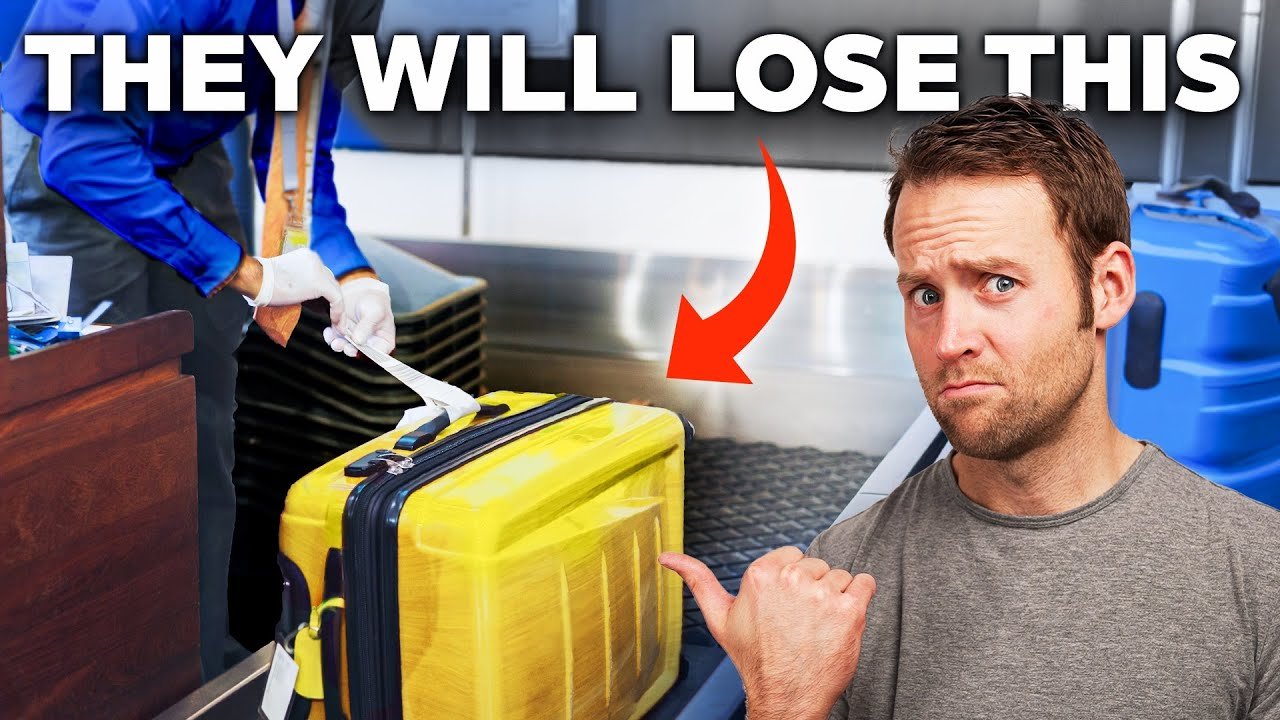Airlines misplace over two million suitcases each year, and the frustration this causes is understandable. Picture yourself watching the luggage carousel, waiting as everyone else collects their bags, while yours is nowhere in sight. But understanding the main reasons for lost luggage can empower you with ways to prevent such travel nightmares. From ticketing errors to transfer mishandling and the failure to load, these account for the majority of missing bags, often due to time constraints at check-in or between flights.
Taking proactive steps is the key to keeping your belongings safe. Always remove old luggage tags to avoid ticketing mishaps, and ensure you have sufficient time for check-in and between connections—aim for at least 1-2 hours domestically and 2-3 hours internationally. Consider popping a tracking device like an Apple AirTag in your suitcase for extra security, and keep essentials such as medications and a change of clothes with you in your carry-on. In the unfortunate event that your luggage goes missing, immediate action at the baggage desk can lead to a swift recovery or at least start the process of filing a claim for reimbursement.
Understanding the Scope of Lost Luggage
Losing luggage during travel can be one of the most frustrating experiences for a traveler. As you watch the baggage carousel spin empty of your belongings, it can feel like the start of a terrible nightmare. Unfortunately, this scenario is all too common in the world of air travel.
Statistics on lost luggage
Airlines lose millions of bags each year, making lost luggage a significant issue for both travelers and airlines. Current statistics indicate that about 75% of all lost or delayed luggage cases can be attributed to three primary reasons: ticketing errors account for 14%, failure to load accounts for 16%, and transfer mishandling is the largest contributor at 46%. With millions of bags passing through airport systems annually, these percentages reflect a substantial number of mishandled personal belongings.
Impact on travelers and airlines
The impact of lost luggage can be distressing for travelers. It disrupts plans, causes inconvenience, and can ruin what could have been a joyful trip. For airlines, on the other hand, lost luggage leads to negative customer experiences and tarnished reputations. Air travel involves complex logistics and multiple touchpoints where errors could occur, each one a potential pitfall for your luggage. Therefore, understanding these dynamics helps in managing expectations and preparing for any unfortunate events.
Behind the Scenes: Common Reasons for Luggage Loss
To better manage your travel experiences, it’s useful to understand the common reasons behind luggage loss. Identifying where things typically go wrong can empower you to take precautionary steps to safeguard your bags.
Ticketing errors
A ticketing error occurs when there is a discrepancy between your itinerary and the label printed for your luggage. For instance, mismatches in the airport codes or outdated tags left on your bag can send it on a joyride to the wrong destination.
Failure to load
Failure to load happens when your bag never makes it onto the aircraft. This could result from short check-in times or logistical challenges at busy hubs. A luggage piece might simply be left behind due to time constraints or human oversight.
Transfer mishandling
Transfer mishandling is the most common cause of lost luggage and occurs during layovers, particularly tight ones. If there’s not ample time between connecting flights, your baggage might not transfer to your next plane along with you.

This image is property of i.ytimg.com.
Ticketing Errors: A Simple Oversight
How ticketing errors happen
Ticketing errors often arise from minor oversights. This occurs when baggage handlers attach luggage tags with incorrect destination codes or leave outdated labels on your bag. Such errors can send luggage to incorrect locations until it is retrieved and rerouted.
Preventing ticketing mishaps
To prevent these errors, ensure that old tags and stickers are removed before checking your luggage. Double-check that the new tags affixed to your bags display the correct destination matching your itinerary. Staying vigilant at this initial stage of the journey can save you from a lot of trouble down the line.
The Logistics Problem: Failure to Load
Factors contributing to loading failures
Loading failures are primarily linked to inadequate time allowances for luggage processing. Whether you’re rushing through a sprawling airport or dealing with understaffed airlines, too-tight schedules are a significant risk factor.
Solutions for avoiding loading issues
Arrive at the airport with plenty of time for check-in—ideally 1-2 hours for domestic flights and 2-3 hours for international ones. Ensuring ample time not only helps in the smooth processing of your luggage but also reduces the risk of it being left behind due to a time crunch.

Transfer Mishandling: The Biggest Culprit
What happens during transfers
During flight transfers, luggage must be moved from one flight to another, often across large airport premises. This choreography requires precision, and any delay in passenger connections can result in your bags failing to make the leap with you.
Strategies for safer luggage transfers
When booking flights that involve transfers, select itineraries with extended layover times, reducing the risk of mishandling. If your journey involves multiple airlines, consider carrying on your luggage to prevent complications from multiple hand-offs.
Smart Packing Tips to Minimize Risks
Use tracking devices
One effective strategy to mitigate the risk of lost luggage is to use tracking devices, such as Apple’s AirTags. Placing one of these in your bag allows you to monitor its location via your smartphone, giving you peace of mind and a head start if it goes missing.
Carry essentials with you
Regardless of how secure your luggage is, always carry essentials like medications, chargers, and a fresh set of clothes in your carry-on. This prepares you for any unforeseen delays or errors in baggage handling.
Versatile clothing tips
Pack versatile clothing that fits various situations, like Merino wool garments. They adapt to temperature changes and can be worn multiple times without washing, making them perfect companions for unpredictable travel scenarios.

What to Do If Your Luggage Goes Missing
Checking carousels
If your bag doesn’t appear, check all carousels in the baggage claim area. Occasionally, bags are rerouted within the airport due to changes in baggage handling systems or simple error.
Filing a claim with the airline
Should your bag be truly missing, promptly contact the airline’s baggage service counter. Provide detailed information, including your baggage tag number, and ensure you receive a claim reference number, which will be essential for tracking.
Tracking your missing luggage
Use the tracking reference provided by the airline, and if you’ve got a device like an AirTag within your luggage, put it to use. Contact the airline regularly for updates on the status of your bag.
Compensation: Exploring Your Options
Airline reimbursements
In the event that your luggage is delayed or lost, airlines owe you compensation for essential purchases needed during the delay. Retain all receipts for such expenses to support your claim.
Credit card compensation
Many credit cards offer provisions for additional compensation tied to baggage delays or losses. Contact your card provider to understand what coverage may be available for you and how to file any necessary claims.
Calculating content value
Under official regulations, airlines must compensate for the declared value of lost baggage content, with reimbursements often capped—up to $3,800 for domestic flights within the US. Itemize your baggage contents before traveling for more efficient claims processing if needed.
The Unclaimed Wonderland: Where Lost Bags End Up
Stores that buy unclaimed luggage
If all efforts to reunite lost luggage with its owner fail, unclaimed bags may be sold to specialty stores. These businesses thrive on the curiosity of buying mystery luggage, offering an intriguing glimpse into what travelers carry around the world.
Unique items found in lost bags
The belongings inside these bags can be surprisingly eclectic, ranging from mundane clothing to rare and valuable objects. Such finds can amuse or astonish, offering insights into the diverse lives of travelers.
Wrapping Up: Ensuring Your Luggage Travels Safely
Key takeaways for travelers
Preparation and strategy are your best bets to safeguard against luggage loss. From allowing sufficient check-in time, selecting appropriate connections, to employing modern tracking technology, these proactive steps make a significant difference.
Enhancing airline accountability
While travelers can take preventive measures, airlines also bear responsibility for optimizing their baggage handling processes. By continuing to voice these needs, travelers can push for improved services and transparency.
With these insights and strategies in place, you’re better equipped to navigate the world of air travel confidently and with peace of mind. Safe travels!
Some of the links on this site are affiliate links, which means I may earn a small commission if you click on them and make a purchase, at no additional cost to you. As an Amazon Associate, I earn from qualifying purchases.

